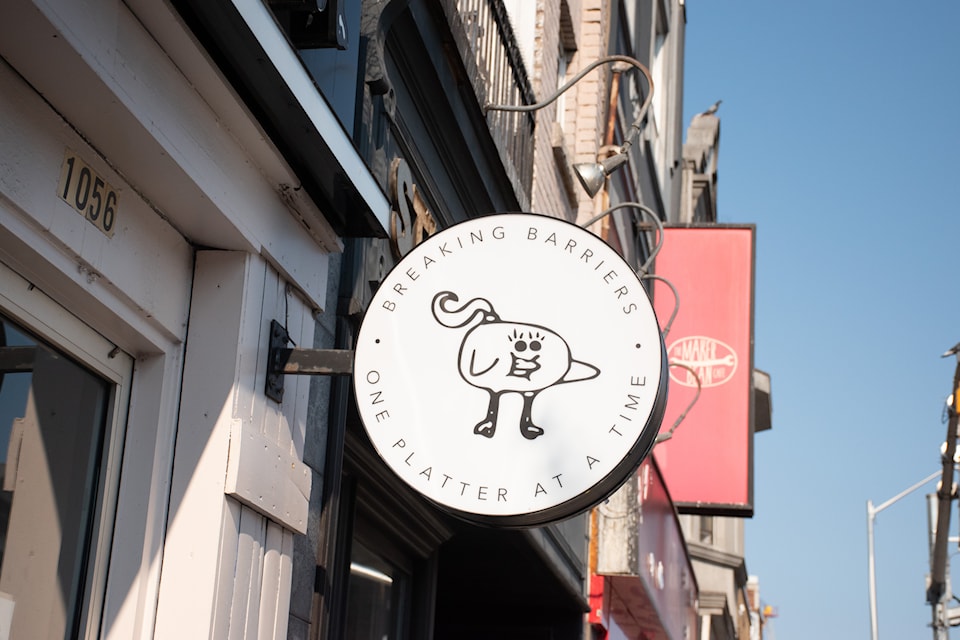Humber Polytechnic culinary professor Mark Jahecki saw firsthand how the food service industry in the GTA was hit hard during the COVID-19 pandemic.
And it doesn’t seem the industry hasn’t recovered from the pandemic.
The culinary veteran highlighted one recent job fair set by a restaurant expected to receive a high volume of more than 50 applicants. However, the number of individuals who turned up was astonishing.
“Of those 54 people that were supposed to show up, two showed up,” Jahecki said.
However, he isn’t the only one in the food service industry to experience staff shortages.
Mike Von Massow, a professor from the University of Guelph who specializes in food culture and how people make food decisions, said kitchen jobs have become unappealing to the everyday person.
A stressful job with an unlivable wage was a major deterrent even before COVID-19, he said. With the industry heavily dominated by males and a "us against the world" mentality, many people opted for more practical choices after the pandemic, Massow said.
“Kitchen work is hard. It’s not family-friendly or friend-friendly. You’re working most holidays [and weekend] nights for sure. If you get days off, it’s Monday and Tuesday,” Massow said.
The sustainable solution is to pay people more but with rising costs causing restaurants to struggle more, he said it's difficult.
Massow said the three biggest costs restaurants face are food, rent and labour.
Jahecki said most profits go to a landlord or the government, with owners struggling to make profits of between seven to nine per cent. This has made expanding businesses a challenge.
The bulk of the food supply chain is barely diversified. Fertilizer, vegetable oil, and wheat are among the main exports from Ukraine.
Massow said the price of these exported goods increased as a result of the conflict in Ukraine.
Meanwhile, Southern California is a major supplier of leafy green vegetables in November and December. However, extreme weather events impact harvests and a decline in the Canadian dollar has led to increased food prices.
Restaurants have also always had a higher rate of failure even before COVID-19, Massow said. If one aspect collapses, then everything else is more likely to go under.
“If you struggle to manage food costs, then you’re going to struggle to make money, rental costs have also gone up, so if you’re unfortunate to have your lease come up in the last couple of years, your housing costs have gone up or your facility costs have gone up, labour is hard to find and more expensive,” Massow said.
As a result of these stressors, certain restaurant owners resorted to pooling tips to cover costs, Jahecki said. However, tips might be creating a larger divide among consumers.
It creates pressure on customers as to how they should pay, Massow said. Having the expectation to judge how much of their wage the customer has to pay based on the service provided creates a power dynamic, he said.
Chris Muthra, a former Chef de Cuisine who left the industry because of the lack of financial sustainability, feels that the tipping culture has become unsustainable.
“When you have these low-income families that can barely afford to feed their kids a ham sandwich and they want to take their kids out on a Friday night just to celebrate, and they're forced to pay a 20 per cent, gratuity is a little bit insane to me,” Muthra said.
Muthra has been in the food service industry for more than 12 years. He ultimately left because he couldn't get a livable wage.
Massow said the only way a restaurant can continue to exist is by reevaluating how everything is run. By changing what the expectations are, it is possible for restaurants to have a greater likelihood of succeeding.
Some restaurants, however, have already learned how to overcome the system.
Sarang Kitchen, a Korean fried chicken restaurant located near Dufferin TTC station in Toronto, is operated by married couple Jennifer Low and Chef Deon Kim, who both believe in inclusivity for their customers and their employees.
Low, a teacher who focused on helping neuro-divergent people before opening the restaurant, says that their focus is ensuring her staff is content and has a livable wage. When staff are happy, their attitude is reflected onto the customers, resulting in a better experience, she said.
She accomplishes this by having set hours for staff, allowing them to pick their days off and allowing workers to call off without repercussions.
The Sarang Kitchen website notes a hospitality-included model, which means that staff are compensated with a predictable wage. Staff are then better able to plan how to budget accordingly, as their pay is set.
Low and Kim believe in this model because they believe customers shouldn’t have to tip just because they feel like they need to. Instead, the menu items generate enough income to cover their salaries.
If customers do insist on tipping, Low says the tip is distributed equally to the entire staff. Tipping is still highly discouraged, however, as Low believes tipping is archaic.
Sarang Kitchen first opened around March last year, with a second location in development.
“I hope there can be more conversation,” she said.
For now, Massow said he believes the only way restaurants can continue to thrive is by changing how they function. Good restaurants that run well can allow both their customers and staff to flourish.
"I think that the future is bright for restaurants. It's just not right for all restaurants,” Massow said.



